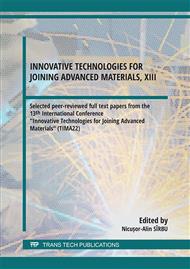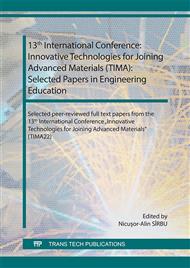Social Analysis on the Education and Training Conditions Required by the Transformation to Digital and Green Fabrication
Abstract:
Education and Training represent the principal means through which individuals acquire skills and competences. And it is through participation in continuous professional development and learning that adults will access, on an ongoing basis, the upskilling and reskilling necessary to adapt to the continuous changes. The paper analyses the gathered information (Delphi analysis using specific surveys) that is necessary for the harmonization of the knowledge involved in the transition to the digital and green manufacturing. The analysis was applied to information received from specialists in fabrication from 5 EU countries, with different levels of industrial development: Belgium, Poland, Portugal, Romania, and Slovenia. According to the analysis, the majority of the responders (75%) did not receive training in digital and green activities in the past 6 months, 69% have participated in digital training. The companies which started the transformation to digital fabrication, use CAD-CAM followed by Enterprise resource planning (ERP), Production and Quality Management systems, communications tools and in a minor scale Robotic production technology, simulation tools and virtual programming digital monitoring. One of the problems identified with this survey was related to lack of digital skills experienced by the surveyed participant (44%) and lack of knowledge in digital training on the part of withe and blue co-workers (almost 80% in total). In terms of the use different digital technologies for the part of the companies it is equilibrated in terms of social media and Collaborative Technologies (30%); Data and Analytics (26%); Mobile Technologies (27%) and Cloud Computing Services (17%). The second part of the Delphi analysis was related on how to engage learners and help them to meet course and programme learning outcomes. Engagement entails includes mindfulness, intrinsic motivation, cognitive effort, and attention. To start with it was important to understand the way teaching/learning should be carried out, and the majority of the participants believed that Hybrid, online and face to face combined lectures are the best learning method, in terms of type of lesson, the short courses between 30-45 min were the most voted option (55%), followed by traditional 45 min lessons (30%).
Info:
Periodical:
Pages:
1-18
Citation:
Online since:
September 2023
Price:
Сopyright:
© 2023 Trans Tech Publications Ltd. All Rights Reserved
Share:
Citation:



